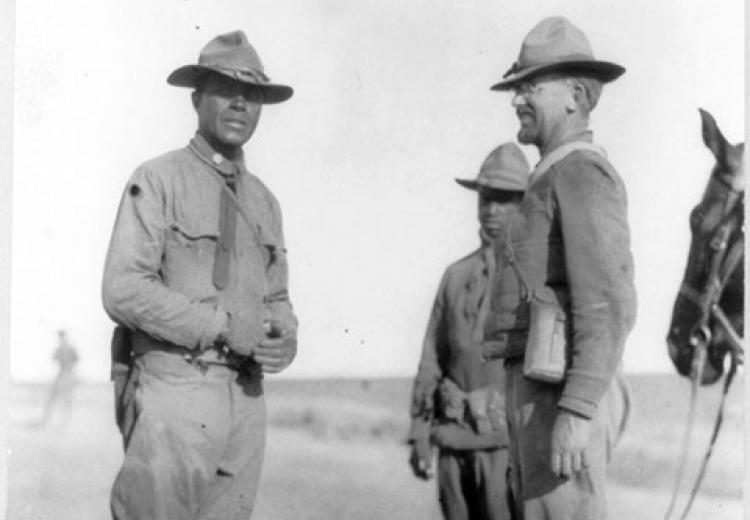African-American Soldiers After World War I: Had Race Relations Changed?

Major Charles Young and Captain John R. Barber, members of the African American 24th Infantry Regiment in Mexico, 1916.
"The Crisis says, first your Country, then your Rights!
Certain honest thinkers among us hesitate at that last sentence. They say it is all well to be idealistic, but is it not true that while we have fought our country’s battles for one hundred fifty years, we have not gained our rights? No, we have gained them rapidly and effectively by our loyalty in time of trial."
—W.E.B. DuBois, from Buffalo Soldiers at Huachuca: Racial Awareness After the War
W.E.B. DuBois, an African American intellectual, whose call for racial equality marked him as a radical thinker in his era, strongly supported the war effort, but the patriotism of African American soldiers was not recognized or rewarded by white military commanders as they deserved.
In this lesson, students view archival photographs, combine their efforts to comb through a database of more than 2,000 archival newspaper accounts about race relations in the United States, and read newspaper articles written from different points of view about post-war riots in Chicago. Students can also investigate our Learning Lab collection on Race, Gender, and the U.S. Military to draw connections to concepts and perspectives from before and after this period.
Guiding Questions
To what extent did WWI affect race relations in the United States?
Learning Objectives
Examine the political and social conditions of African Americans before and after WWI.
Analyze primary sources to determine point of view and evaluate change over time.
Use evidence from a variety of texts to construct a response to the GQ.
